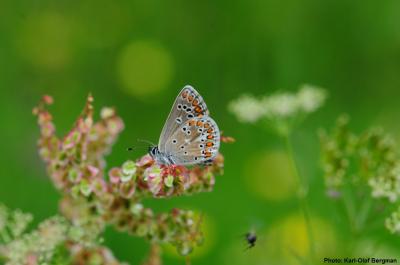Background

The occurrence of semi-natural habitats has an important effect on species diversity in agricultural landscapes. In Sweden, semi-natural grasslands have decreased in size and have become more isolated, resulting in a fragmented distribution of these habitats in the landscape, giving them a particularly high conservation value. Semi-natural grasslands and heath/scrub are among the most important biotopes for butterflies and they have been shown to be sensitive indicators that react quickly to environmental changes.
Local species richness in the grasslands is dependent on both local and landscape factors. Habitat area, habitat isolation and habitat quality are known to correlate with local species richness and population densities. Furthermore, the amount and composition (number and proportions of different cover types) of habitat in the surrounding landscape can contribute to the overall quality of the semi-natural grassland patches. However, the scale at which landscape structure should be measured is unclear. This is due to the fact that different species respond to their environment at different scales since p rocesses such as reproduction, mortality in the matrix, dispersal, foraging, local extinction and other species interactions may operate at different spatial and temporal scales .
In this study, scale refers to the extent (radius) at which the habitat predictors have been measured . The scale of response is the scale at which the ecological response (e.g. species richness) in the focal area is best predicted by the landscape structure (e.g. habitat amount) . Given that different species perceive the habitat at different scales, the effects of habitat loss and fragmentation can vary between them.
Responsible for this page:
Director of undergraduate studies Biology
Last updated:
05/23/13
